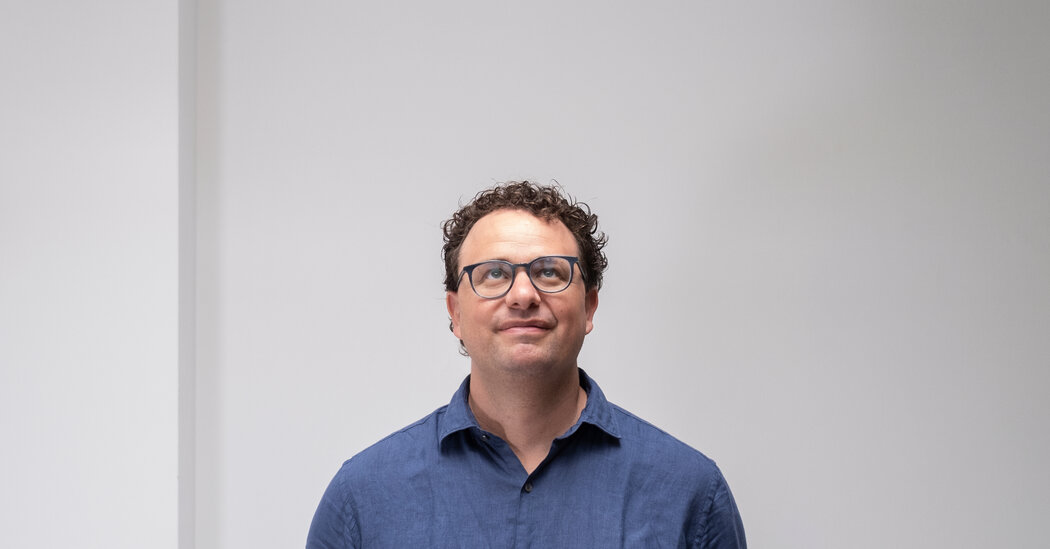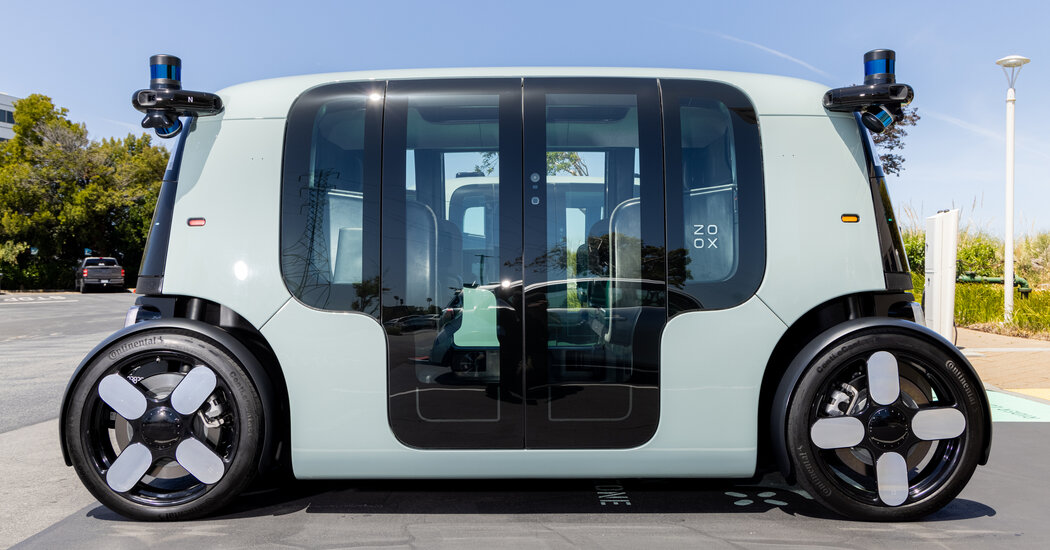Last May, Anthropic, one of the world’s hottest artificial intelligence start-ups, raised $450 million from investors including Google and Salesforce. It was the beginning of an astonishing funding spree.
By August, Anthropic had landed $100 million from two Asian telecoms. Then Amazon committed $4 billion to it, followed by $2 billion more from Google.
This month, the venture capital firm Menlo Ventures closed a deal to invest $750 million in Anthropic.
All told, the A.I. start-up hauled in $7.3 billion in a year. Its five funding deals stood out not just for their speed and size, but for their unusual structures.
In one of those deals, Anthropic agreed to use technology such as chips and cloud computing services from the companies that invested in it. That meant, in effect, that some of the money it raised would be pumped back into its investors. And to consolidate smaller investors who were interested in Anthropic, Menlo created a legal entity known as a “special purpose vehicle.”
“These deals are so complicated,” said Dave Brown, an Amazon Web Services vice president who was involved in Amazon’s deal with Anthropic.
For all of A.I.’s promise of transforming every aspect of society, it has started by upending Silicon Valley’s start-up deal-making. Young companies typically raise money every 15 months or so, after showing that their businesses have grown. But since generative A.I. — which can generate text, images, sounds and video — burst onto the scene in late 2022, the rule book has been thrown out as investors have fought for a piece of the hottest developers.
Few companies better illustrate that shift than Anthropic, which makes a chatbot called Claude and sells various forms of its A.I. technology. Over the last year, the start-up’s valuation has tripled to $15 billion, three people with knowledge of its finances said. It hit roughly $8 million in monthly revenue last year and expects that to grow by around eightfold this year, two of the people said.
Other A.I. start-ups, including OpenAI, Character.AI and Cohere, have struck similar kinds of investment deals as they race to collect the most money, form the most lucrative partnerships, hire the best talent and get access to the most computer chips. OpenAI recently completed a deal that values it at $80 billion or more.
Investors cannot afford to lose out on the action because “if you miss the winner in the space, you’re kind of out of the game,” said Ilya Strebulaev, a finance professor at Stanford.
Some investments in A.I. start-ups by the tech giants have recently attracted regulatory attention. Last month, the Federal Trade Commission said it had opened an inquiry into Amazon’s and Google’s investments in Anthropic for potential antitrust violations.
A spokeswoman for Anthropic said it planned to cooperate with the F.T.C. The company declined to comment further. Anthropic’s funding from Menlo Ventures was reported earlier by The Information.
Since founding Anthropic in 2021, Dario Amodei, the chief executive, and his sister, Daniela Amodei, the president, have positioned it as a start-up that would build A.I. with guardrails. In a podcast interview last year, Dario Amodei said there was a 10 to 25 percent chance that A.I. technology could destroy humanity.
But if that doesn’t happen, he said, “it’ll go not just fine, it’ll go really, really great.”
From the start, Anthropic’s funding has been unconventional. In 2021, it raised $124 million from investors including Jaan Tallinn, an entrepreneur known for focusing on the existential risks of technology, as well as the Center for Emerging Risk Research, a Swiss nonprofit that aims to “build a future guided by wisdom and compassion for all sentient beings.” (The group has changed its name to Polaris Ventures.)
In 2022, Anthropic raised $580 million for research on building powerful A.I. technologies and working to ensure that they did not cause harm. Most of that sum — which dwarfed what venture capitalists had invested in other A.I. start-ups — came from Sam Bankman-Fried, the founder of the FTX cryptocurrency exchange, and his colleagues. They belonged to a community known as effective altruists, which has long viewed A.I. as an existential risk.
When FTX filed for bankruptcy in November 2022 and control of its assets was handed to new management, Anthropic was left with an uncertain future. Its prospects reversed days later when OpenAI released the A.I.-powered chatbot ChatGPT. The technology that underpinned ChatGPT was developed largely by Dario Amodei and others who had worked at OpenAI before leaving to create Anthropic.
That brought attention to Anthropic, and Google made its first investment. Anthropic also agreed to buy computing power through Google’s cloud computing service, which it uses to train and serve its technologies.
In September, Amazon inked a similar deal with Anthropic, investing up to $4 billion. Anthropic’s Claude chatbot was the most popular A.I. service offered on Amazon’s cloud computing system, Amazon Web Services, a person with knowledge of the matter said.
As part of the pact, Anthropic agreed to build its A.I. using specialized computer chips designed by Amazon. If Anthropic is a success, Amazon’s shares in the start-up could pay off handsomely. In the meantime, the cloud computing deal will lift Amazon’s bottom line.
The deal was structured as convertible notes, or debt that becomes equity when Anthropic hits certain milestones, two people familiar with the structure said.
Amazon’s funding of Anthropic mirrored the way OpenAI raised money. In 2019, OpenAI garnered $1 billion from Microsoft and spent most of the money buying computing power through Microsoft’s Azure cloud service. Microsoft has since poured an additional $12 billion into the company, and OpenAI has spent most of the money on Microsoft’s cloud services.
(The Times has sued OpenAI and Microsoft, alleging copyright infringement.)
Some investors have questioned such deals because companies like Google and Amazon are investing money that ends up bolstering their own revenues. The companies said the arrangements were kosher.
Google’s investment in Anthropic is separate from the start-up’s agreement to use its cloud services, said Daniel Gabis, a Google spokesman. They have “always been separate,” he said.
Amazon appropriately accounts for all revenue and expenses, said Casey McGee, an Amazon spokesman. “Suggesting otherwise, or that AWS’s agreement with Anthropic is anything but a normal business agreement, is entirely false,” he said.
Even after raising billions from Amazon and Google, Anthropic knew it would eventually need more money. Generative A.I. start-ups are constantly updating, refining and expanding their technology to make their product accurate, up-to-date and more powerful, and that requires enormous amounts of expensive computational power.
Finding new investors was easy for Anthropic. But many of those who were interested wanted to invest $10 million to $25 million, while the company aimed for a much larger sum.
In November, Neerav Kingsland, Anthropic’s head of business development, spoke at a conference hosted by Menlo Ventures, which had previously invested. Menlo proposed leading Anthropic’s next round of funding, with a twist: What if the firm rolled all of the small investors into one special purpose vehicle?
The arrangement would save Anthropic time and simplify the process. Mr. Kingsland and Anthropic’s founders agreed, a person with knowledge of the talks said.
Anthropic told investors that $15 billion was the lowest valuation it would accept, two people familiar with the situation said.
After collecting the $750 million this month, Anthropic is no longer running a formal process to raise money, a person familiar with the situation said. But investors may soon get another opportunity.
As part of FTX’s bankruptcy proceedings this month, the crypto firm asked the U.S. Bankruptcy Court in Delaware for permission to sell its 8 percent stake in Anthropic. FTX’s lawyers said they sought to move quickly to sell the shares alongside upcoming rounds of Anthropic funding.
It was FTX’s understanding “that Anthropic will continue to seek additional rounds of equity financing,” the lawyers wrote.







